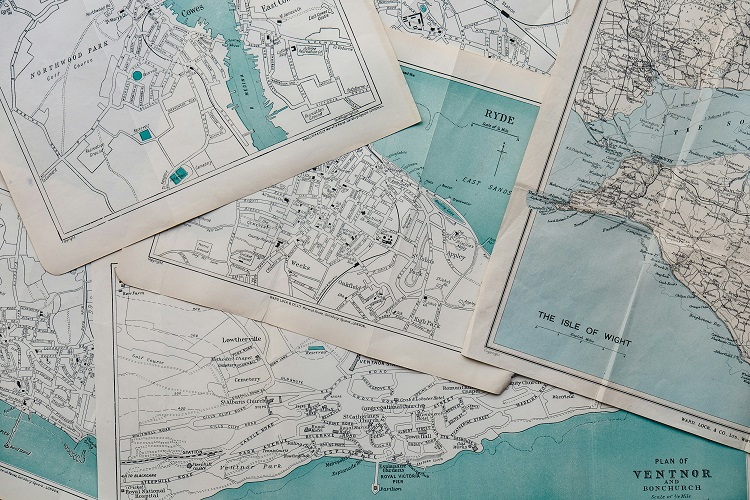As mentioned earlier, some of the earliest scholars involved in geography were Greek philosophers. Of these, Herodotus was particularly distinguished for geography. He was a traveler who described in detail the history of Persia and Egypt, and was also the first to put forward the thesis that the Caspian Sea is not part of the ocean. The second outstanding geographer and traveler of ancient times was Strabon. He made a description of the world as he knew it in the work Geography, consisting of 17 books. His description was used by the managers of the Roman Empire. One of the greatest achievements of ancient geography was made in the 3rd century BC, the determination of the circumference of the Earth by Eratosthenes. In 150 BC, the first globe was created and its maker was Crates of Mallos. A person who made a significant contribution to the development of geography was the Greek scientist Claudius Ptolemy.

Ptolemy was the author of an eight-volume work containing maps and a description of the then known part of the world. An important period for the development of geography was the numerous geographical discoveries of the Vikings in the 10th century, who were the first to reach North America ( Labrador, Newfoundland), and the Arabians (Al.-Idrisi). The author of the first comprehensive description of the countries of the Far East was Marco Polo, Also important were other discoveries of Christopher Columbus in 1492 (reached Central America-Cuba, Haiti), Giovanni Caboto in 1497 again sailed to Labrador and Newfoundland, In 1498 Vasco da Gama reached India from Europe by sailing around Africa. In 1519-22, a very important expedition around the world in terms of geography took place Ferdinand Magellan. This voyage confirmed the theses of the Earth’s sphericity. The 16th century also saw a rapid development of cartography. Gerhard Kremer (Mercator) constructed a map of Europe, very useful for sailing, based on cylindrical faithfulness mapping, and the Ortelius school of cartography was founded, which drew up the first world atlas on a mathematical basis. Geographical discoveries continued in the 17th century.
Luis vaez Torres discovered and sailed the strait between New Guinea and Australia. The strait is still named after him today. In 1642, Abel Tasman discovered Tasmania, New Zealand, the Fiji Islands and Tonga. In the 18th century, James Cook, while surveying the Pacific Ocean, discovers the northeastern coasts of Australia, New Caledonia, Hawaii and other islands. In 1750, measurements are made of the depressions of the Caspian Sea, while James Hutton in 1788 published a work explaining the relief of the Earth’s surface, also describing the factors, and processes leading to the formation of a particular type of relief. At the end of the 18th century, despite the considerable scientific achievements of geography, the world map still showed white spots marking inaccessible, and unknown areas. At the beginning of the 19th century Alexander Humboldt began his research in South America, his expedition is considered the prototype of modern geographic scientific research. He made a careful mapping of the area while conducting accurate measurements. In 1820, the first chair of geography in the world is established in Berlin.
In 1849 Wincenty Pol established the first chair of geography in Poland and the second in the world at the Jagiellonian University. In the mid-19th century, exploratory voyages to discover previously unknown areas continued. Edmund Strzelecki conducted exploratory research of Australia, He conquered the highest peak of this continent and named it Mount Kosciuszko. In the mid-19th century there were also British expeditions to Africa with the goal of discovering the sources of the Nile. These expeditions were led by David Livingstone, who traversed the Kalahari basin and discovered the Zambezi River, and waterfalls: Victoria, Tanganyika, Niasa. After Livingstone disappeared, with another expedition went Henry Stanley whose main goal was to discover the sources of the Nile, and to find Livingsone. Stanley made many discoveries in Central Africa (Ruwenzori, numerous tributaries of the Congo River), and found the ailing Livingstone himself near Lake Tanganyika.
The actual source of the Nile was discovered in 1858. By John Speke. In the mid-19th century, George Everest determined the highest peak on Earth. In the 20th century, Polish geographer and cartographer Eugeniusz Romer compiled a very accurate geographical atlas. The beginning of the 20th century was also the time of Arctic exploration expeditions in which Polish explorers, including Antoni Dobrowolski, participated. The North Pole was conquered in 1909 by R. Peary. At the beginning of the 20th century there were two expeditions that set themselves the goal of conquering the South Pole: British-led by F. Scott, and the Norwegian one led by R. Amundsen. In 1911, R. Amundsen just before F. Scott reached the South Pole. In 1953, Edmund Hillary was the first to climb the world’s highest peak. In 1992/93, the first successful solo expedition to reach the South Pole took place.





